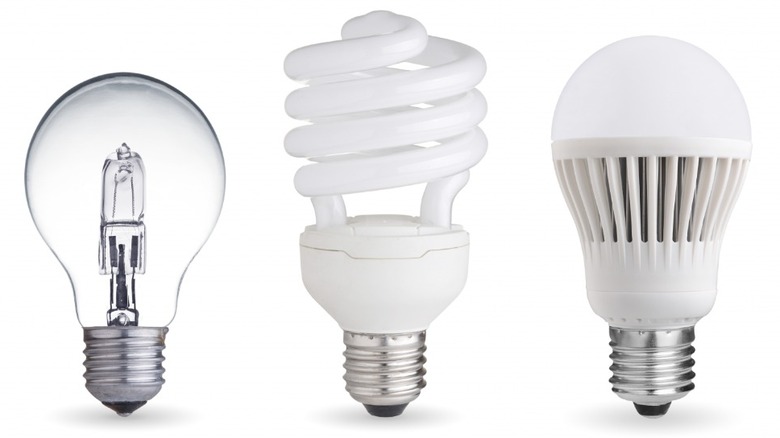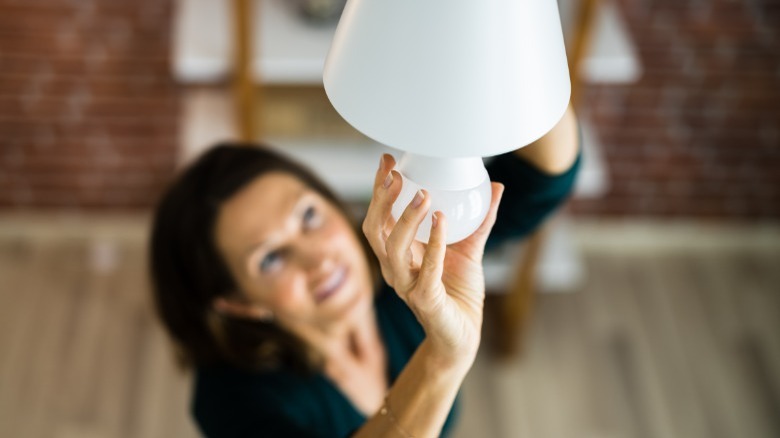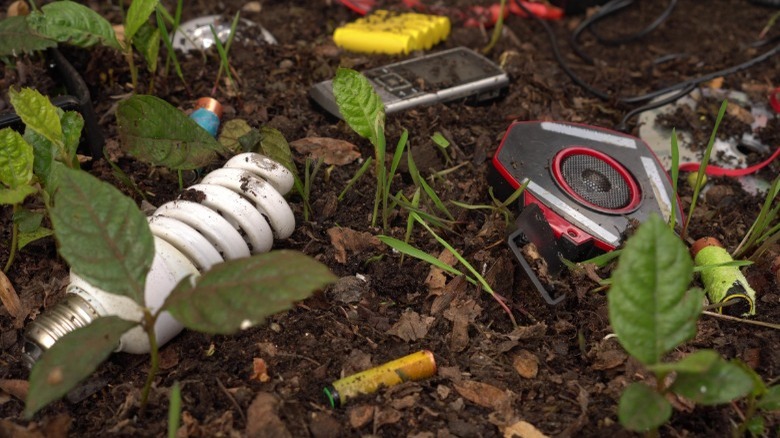Here's Why Halogen Lightbulbs Are Banned In The United Kingdom
As time wears on, it's becoming clear that the writing is on the wall when it comes to products and services that are destructive to the environment. It's taken a long time for governments to react, but we're finally seeing legislation that attempts to tackle some of the biggest issues humanity faces when it comes to climate change. Even the U.S. is discussing a ban on internal combustion vehicles in the near future.
Some of the changes being made are sweeping and potentially life-altering for some, like the EU's move to end the sale of diesel- and gasoline-powered vehicles by 2035, or the U.K.'s clean air zones. Other changes are smaller and may not have as great an impact on the day-to-day lives of those that have to follow them, although governments and proponents hope that these small changes will still be enough to move the needle, even if only slightly. One of the smaller changes to come about in recent years was the United Kingdom's move to switch to more efficient lightbulbs, targeting halogens first and moving to phase out fluorescent bulbs later on.
Phasing out halogens and fluorescent bulbs in favor of LEDs
According to a press release published in June 2021 by the Department for Business, Energy, and Industrial Strategy, halogen lightbulbs have been banned from stores since September 2021. Moving away from halogen and fluorescent bulbs, which began in 2018, aims to transition the union towards LED lighting. The Department for Business, Energy, and Industrial Strategy reports that about two-thirds of Britain's lightbulbs were LEDs in June 2021, and the initiative is predicted to result in LEDs making up 85% of the lightbulbs sold by 2030.
LEDs are more efficient than their halogen and fluorescent counterparts and generally have a longer lifespan to boot. An ordinary LED bulb is capable of between 50,000 and 100,000 hours of illumination, while halogens top out at only around 2,500 hours of use. What's more, LEDs are superior when they do fail, because they don't usually catastrophically fail. Instead, LEDs degrade over time, and the rated lifespan of an LED is how long it takes to reach a point where it's functioning below 70% of its designed output, meaning LEDs only really need replacing when they no longer produce enough light.
LEDs produce less waste and reduce carbon emissions
LEDs are in the region of 80-90% more efficient than halogens and fluorescent lights, which should result not only in savings when it comes to the energy bill, but also a reduction in overall carbon emissions. The U.K. government calculated that the ban on halogen lights — and subsequent move to LEDs — will have the same impact as removing over half a million cars from the roads, reducing the nation's carbon output by 1.26 million tonnes per year. The extended lifespan of LEDs is estimated to reduce electrical waste by around 100,000 tonnes per year.
It should be noted that there are exceptions to the new ban on halogen lights. Specifically, HL R7 halogens — high-output linear bulbs usually used for security, floor, and flood-lighting purposes — and T5 fluorescent tubes, commonly used in schools and offices, will still be permitted for sale. That's a curious decision since those bulbs are bound to be fairly common and LED replacements exist. Special-purpose halogens, like those used for scene lighting in live entertainment, film and photography studios, and theater and TV production, will also be permitted.


